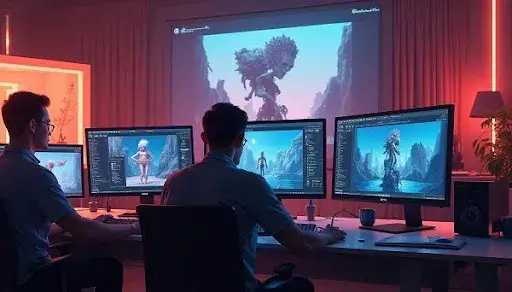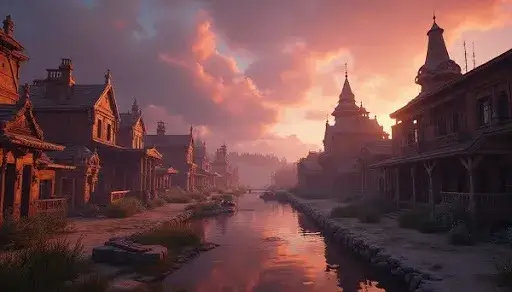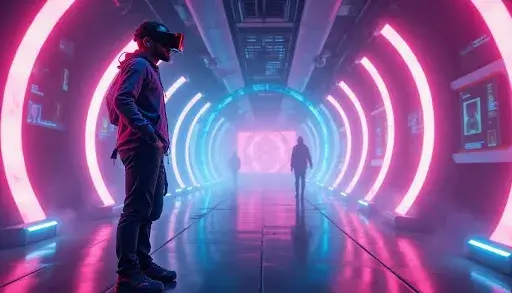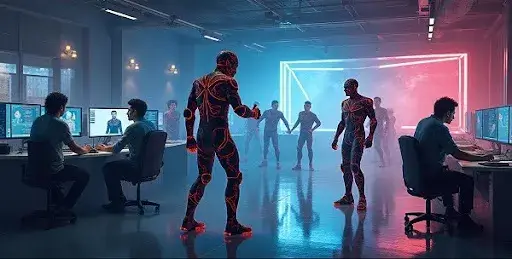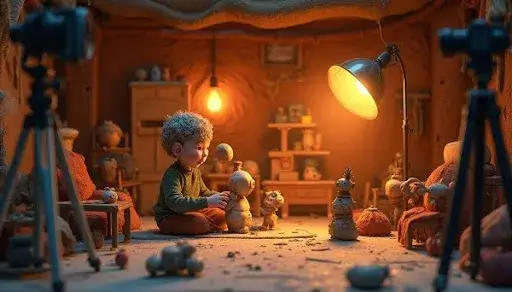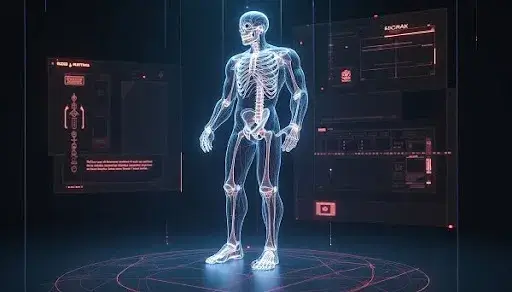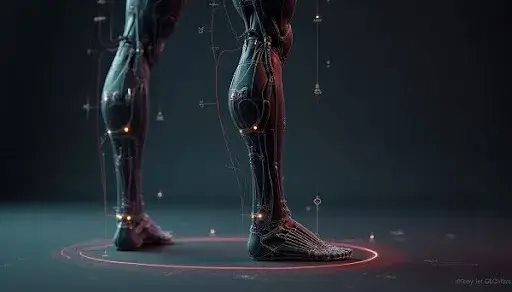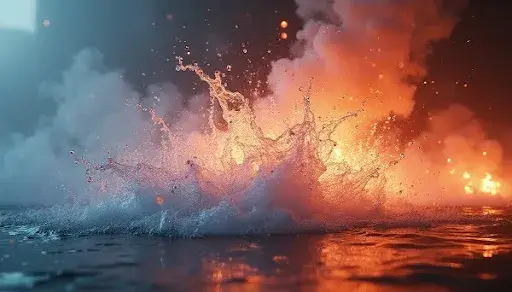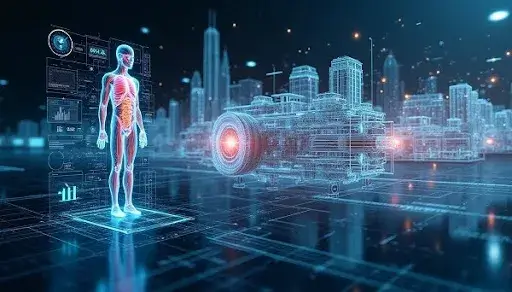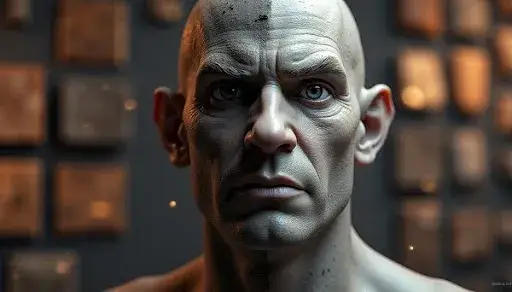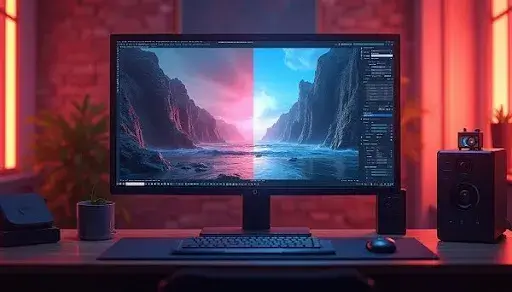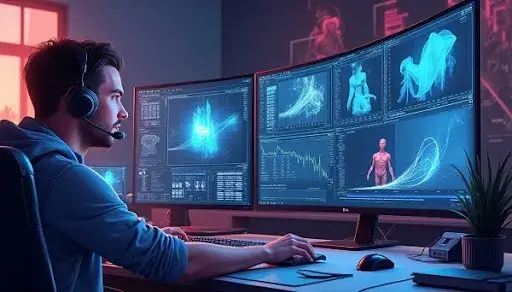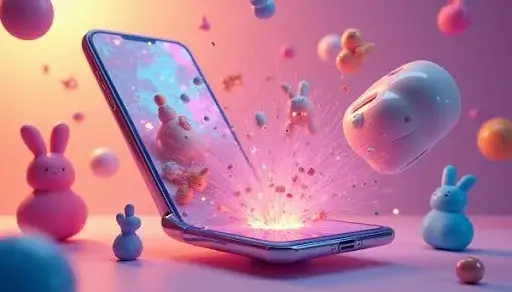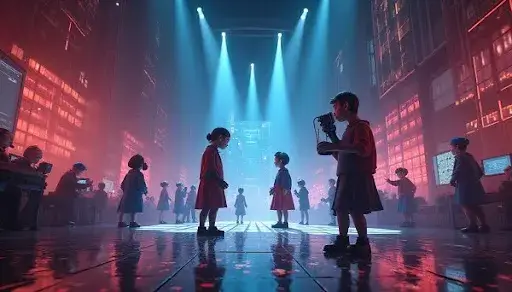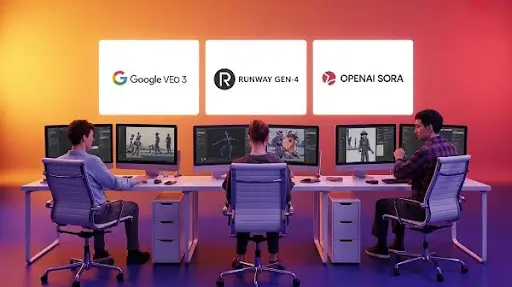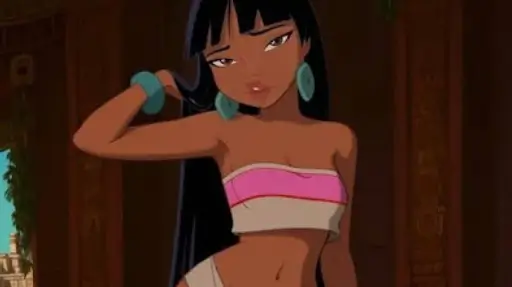Step into any modern blockbuster, scroll past an ad, or pick up the latest game controller, and you’ll see it. The silent powerhouse behind jaw-dropping visuals, storytelling twists, and mind-bending realism: the vast, fascinating world of 3D animation and its types.
It’s more than just pixels moving; it’s an entire craft blending art, science, and technology into frames that live forever.
But here’s the real twist: types of 3D animation aren’t one-size-fits-all. Every mind-blowing VFX scene, playful cartoon series, or hyper-realistic video game owes its existence to a variety of 3D animation styles, tools, and 3D animation techniques. If you’ve ever wondered how these digital marvels are made, you’re in the right place.
This is your deep dive into different types of animation, modern 3D animation solutions, and the core 3D animation process behind them, all crafted by artists, modelers, and technical wizards shaping ideas into stories.
Understanding the Art of 3D Animation
The art of 3D animation is the backbone of digital entertainment today. Unlike flat, frame-by-frame 2D sequences, 3D animation pulls audiences inside a multi-dimensional universe. It gives height, depth, and motion to once-static drawings.
But not every project uses the same 3D animation techniques. Some demand raw realism; others push for stylized, playful looks. The entire 3D animation process, from concept sketching to rendering, changes with each style.
Digital 3D Animation
Digital 3D is the gold standard of 3D animation and its types. From Pixar classics to next-gen Marvel blockbusters, this method creates visual spectacles that feel larger than life.
In digital 3D, animators craft characters, props, and environments with powerful software like Autodesk Maya or Blender. These virtual assets get “rigged” with skeletons, then animated frame by frame.
The key strength? Digital 3D can:
- Build impossible worlds.
- Replace risky stunts.
- Blend live-action with breathtaking CGI.
- Deliver complex scenes that real cameras could never capture.
Studios spend months on this detailed 3D animation process, adding layers of textures, lights, and physics. The result? Immersive moments audiences replay endlessly.
Interactive 3D Animation
Interactive 3D is where the audience isn’t just watching, they’re steering the show.
Games like Fortnite or Red Dead Redemption 2 are legendary because they pull players into living, breathing universes. This style relies on advanced interactive 3D animation, where every character, building, and background must respond to player input.
Key parts of interactive 3D:
- Real-time rendering engines.
- Adaptive character rigs.
- Dynamic environments.
- Player-controlled camera angles.
Unlike linear animation, interactive 3D demands flexibility. Objects must look perfect from any angle, no matter how unpredictable the gameplay. That’s why the 3D animation techniques behind AAA games blend performance capture, procedural generation, and stunning VFX.
Virtual Reality Animation
Virtual Reality, or VR, takes types of 3D animation into total immersion. Unlike games on a screen, VR drops the user inside the scene.
Creators use the same powerful modeling and rigging tools, but the stakes are higher. In VR, the smallest detail, a flickering light, a character’s shadow, must feel real. The entire 360-degree sphere must hold up when viewed from any angle.
Popular VR animation relies on:
- Precise 3D modeling.
- High-frame-rate rendering.
- Fluid motion capture.
- Optimized environments to avoid lag.
Think of Beat Saber’s neon tunnels or the jaw-dropping VR worlds built on the Unreal Engine. They showcase how advanced 3D animation styles push the boundaries of what’s possible.
Motion Capture Animation
One of the most popular 3D animation techniques, motion capture (mocap) blends live acting with digital artistry. Animators record real human movements using sensors, then map them onto 3D rigs.
The result? Uncanny, life-like performances that preserve every twitch and gesture.
Top studios rely on mocap for:
- Complex fight scenes.
- Emotional character acting.
- Animal movements.
- Subtle face tracking.
Blockbusters like Avatar and The Lord of the Rings elevated motion capture (mocap) into an art form. Even gaming studios utilize motion capture (MOCAP) to lend characters weight, realism, and fluid motion.
Cel-Shaded 3D
Not all 3D animation styles chase realism. Cel shading bends reality to mimic the charm of hand-drawn cartoons.
Games like The Legend of Zelda: Breath of the Wild or shows like The Simpsons have harnessed this approach. The trick? Clever rendering settings that flatten shadows and add bold ink outlines.
Cel shading relies on:
- Limited color palettes.
- Sharp shadow borders.
- Outlined edges for a sketch-like feel.
This hybrid style is the perfect blend for brands or projects wanting a playful, comic-book look without losing the depth of 3D.
Stop Motion
Stop-motion remains one of the most beloved creative types of 3D animation, where physical objects are moved frame by frame to create lifelike motion.
Here’s why stop motion stands out:
- Real-world textures (clay, paper, puppets).
- Handmade sets and props.
- Frame-by-frame photography.
- Zero digital models, everything is real.
Think Coraline or Wallace & Gromit, their timeless charm is all thanks to this crucial technique in 3D animation.
Motion Graphics
When speed, style, and impact matter, motion graphics take center stage. This method weaves typography, shapes, and sometimes 3D elements into short, catchy videos.
Businesses love motion graphics for:
- Product explainers.
- Corporate presentations.
- Event visuals.
- Social media ads.
Modern motion graphics use slick 3D animation techniques like keyframing and tweening to ensure seamless motion. While they rarely feature characters, the visual punch is hard to beat.
3D Rigging
At the heart of every moving character is a digital skeleton. 3D rigging is a hidden star in the 3D animation process. It connects a model’s surface to an underlying bone system.
Key points of rigging:
- Bones control movement.
- Joints mimic real anatomy.
- Rigs determine how meshes deform.
Without strong rigging, animators couldn’t make characters jump, smile, or swing swords convincingly. It’s a masterful art form, requiring deep knowledge of anatomy and engineering.
Inverse Kinematics
One powerful 3D animation technique that saves time is Inverse Kinematics (IK).
Rather than moving each bone manually, IK lets animators set an end point, like a foot’s position on the ground, and the software adjusts the rest of the limb naturally. It’s brilliant for fluid, realistic motion without hours of manual tweaking.
Studios combine IK with rigging to craft characters that move like living beings.
Fluid Simulation
When artists want to mimic nature’s chaos, fluid simulation enters the picture. This advanced 3D animation style creates water, fire, smoke, and other dynamic effects.
Fluid simulation needs:
- Complex physics engines.
- High computing power.
- Detailed texture mapping.
It’s a must for realistic storms, explosions, and underwater shots that look stunning on the big screen.
Read also: Cel Animation: How It Works and Why It’s Iconic
Exploring Advanced 3D Animation Styles That Shape Industries
Once you’ve mastered the basics, the real magic unfolds in advanced 3D animation styles that power entire industries beyond Hollywood and gaming. The possibilities multiply when artists blend new 3D animation techniques with emerging tech.
Medical visualizations, engineering walkthroughs, and architectural flyovers all rely on types of 3D animation that are far more technical than a simple character render. In these projects, precision is king.
Architectural 3D Animation
One of the most practical types of 3D animation is architectural visualization. Here, the 3D animation process transforms flat blueprints into immersive walkthroughs that sell ideas before a single brick is laid.
Key uses of architectural animation:
- Exterior flyovers for real estate.
- Interior design previews.
- Virtual staging.
- Urban development proposals.
These visuals are so convincing that many buyers and stakeholders can’t distinguish them from real photos. The secret? Skilled use of lighting, texture, and camera animation, plus the crucial technique in 3D animation called photorealistic rendering.
Mechanical Animation
When you want to showcase how complex machinery works, mechanical animation steps in. This creative type of 3D animation is popular with manufacturers, automotive brands, and product designers.
Why it matters:
- Explains internal mechanisms.
- Demonstrates moving parts.
- Tests design functionality.
- Creates promotional material for investors.
Detailed rigging and physics simulations help mechanical animations show how gears turn, pistons fire, or engines hum, all before production begins.
Product Animation
Brands looking to stand out online often turn to 3D animation studios for product animations. These slick visuals grab attention and explain features far better than static photos.
Benefits of product animation:
- 360° product spins.
- Exploded views showing parts.
- How-to-use demos.
- Custom animations for ads.
Companies in tech, fashion, and consumer goods trust this style to boost conversions and engagement across digital channels.
Educational 3D Animation
Complex ideas stick better when they’re seen in motion. That’s why educators, training providers, and e-learning brands rely on various types of 3D animation to break down tough topics.
Examples:
- Medical animations for surgeries.
- Animated science experiments.
- Engineering principles in action.
- Historical recreations.
This art of 3D animation bridges the gap between textbooks and real-world understanding, bringing dry theory to life.
The Role of Texturing in the 3D Animation Process
No matter how stunning the model, it’s the textures that add soul. Think weathered wood, brushed metal, wrinkled fabric, texturing is a crucial technique in 3D animation that sells realism.
Texture artists work alongside modelers and animators to wrap surfaces in believable details. They might use photos, hand-painted maps, or procedural textures to mimic real-life materials.
Without great textures, even the best 3D animation styles fall flat.
Lighting and Rendering: Where Scenes Get Their Final Polish
Another unsung hero in the 3D animation process is lighting. Animators use virtual lights to mimic how real-world illumination bounces off surfaces, casting shadows, highlights, and mood.
Lighting artists:
- Choose light sources and colors.
- Set the scene’s atmosphere.
- Enhance depth and focus.
Rendering, the final step, transforms all this into finished frames. It’s why the same 3D model can look cheap or cinematic depending on how it’s lit and rendered.
How 3D Animation Studios Manage Massive Projects
Bringing large-scale 3D animation concepts to life demands teamwork. A typical 3D animation studio divides tasks between:
- Concept artists: Sketch the initial vision.
- Modelers: Sculpt characters and assets.
- Riggers: Build skeletons and controls.
- Animators: Create motion.
- Texture and lighting artists: Polish every pixel.
- Compositors: Blend 3D scenes with live-action or effects.
Each step uses different 3D animation techniques, tools, and pipelines, so clear communication keeps everything on track.
You may also like: Walking Animation: A Beginner’s Guide on Walk Cycle
Popular 3D Animation Techniques for Faster Production
Working smarter, not harder, is a golden rule for any 3D animation studio. Over time, animators have developed tricks to boost output without losing quality.
Some popular 3D animation techniques include:
- Keyframing: Setting important poses; the software fills in the motion.
- Tweening: Smoothing transitions between keyframes.
- Motion Capture: Recording real actors to skip manual posing.
- Procedural Animation: Letting code handle repetitive movements, like crowds or weather.
- Physics Simulations: Automating realistic motion for fluids, cloth, and hair.
Combining these saves weeks in production.
Different Types of Animation Software Professionals Use
Not every tool fits every style. Here’s a quick look at where popular software fits into different types of animation projects:
- Maya: Industry leader for film and AAA games.
- Blender: Open-source all-rounder, great for hobbyists and pros alike.
- Cinema 4D: Perfect for motion graphics.
- ZBrush: High-end sculpting for characters.
- Dragonframe: The gold standard for stop motion.
- Unreal Engine: Real-time rendering for games and VR.
Each program supports unique 3D animation techniques and shapes how artists tackle scenes.
How to Make 3D Animation Stand Out
Creating wow-worthy types of 3D animation isn’t only about software or budget. The magic comes from storytelling, design, and technical craft working as one.
Here’s how top studios elevate every frame:
- Develop clear storyboards.
- Balance style with realism.
- Invest time in rigging and physics.
- Use references for natural motion.
- Polish every render with post-production tweaks.
No shortcut replaces the experience and passion that fuel outstanding 3D animation solutions.
Creative Types of 3D Animation for Social Media Buzz
Short-form videos thrive on platforms like Instagram, TikTok, and YouTube Shorts, so brands are tapping creative types of 3D animation to make snackable content.
What works best?
- Quick logo reveals.
- Playful product teasers.
- Mini VR previews.
- Interactive AR filters.
These bite-sized animations keep audiences hooked and sharing, a must in today’s scroll-happy culture.
Unique 3D Animation Concepts That Redefine Storytelling
Some studios break rules to push fresh 3D animation concepts into the spotlight. Think hybrid projects mixing live-action with 3D overlays or abstract animations driven by AI.
Experimental animators play with:
- Unreal textures.
- Dreamlike lighting.
- Nonlinear storytelling.
These out-of-the-box projects often win awards, proving there’s no ceiling on what the art of 3D animation can achieve.
Pushing Boundaries with Hybrid 3D Animation Techniques
When innovation meets creativity, hybrid 3D animation techniques emerge, blending various 3D animation styles with 2D overlays, live-action elements, and motion graphics to deliver unique visual stories.
These creative types of 3D animation are widely used in:
- High-end commercials demanding cinematic quality.
- Music videos looking to merge surreal visuals with live performances.
- Educational videos simplifying complex data with layered animation.
- AR filters that blend real faces with animated masks in real-time.
The secret to impactful hybrid animation lies in using the right 3D animation concepts that fit your brand’s story while keeping the viewer’s attention locked from the first second to the last.
Essential Tips on How to Make 3D Animation More Impactful
If you want to master how to make 3D animation stand out, you need to align creativity with technical execution.
Here are practical tips:
- Pre-production planning: Storyboarding and previsualization help map out every frame, saving hours during production.
- Reference real-world physics: Animation shines when it mimics reality’s subtle details, such as secondary movements and weight shifts.
- Consistent lighting and rendering: High-quality lighting design amplifies realism.
- Detailed textures: Even in stylized animations, textures add character and depth.
- Sound design integration: The right sound effects can enhance the emotional impact of your animation.
These practices ensure your animations resonate with your audience while representing your brand’s standards.
Key Stages in the 3D Animation Process
To truly appreciate 3D animation and its types, it’s important to understand the 3D animation process, which generally includes:
- Concept Development: Defining your story, target audience, and key visual goals.
- Modeling: Creating 3D characters, objects, and environments.
- Rigging: Adding bones and controls for movement.
- Animation: Bringing models to life using motion principles.
- Texturing and Lighting: Enhancing realism or style.
- Rendering: Processing frames into a final video.
- Compositing and Editing: Adding effects, sound, and fine-tuning.
Each stage requires its own crucial technique in 3D animation, and skipping or rushing through these steps often leads to lower-quality results.
Benefits of Using Different Types of Animation in Business
Leveraging various types of 3D animation offers businesses a competitive edge:
- Enhanced storytelling: 3D visuals can simplify complex processes.
- Higher engagement: Viewers retain information better with visual stories.
- Professional branding: High-quality animations reflect a commitment to excellence.
- Versatility across platforms: Suitable for social media, websites, presentations, and AR/VR applications.
Many businesses that have adopted 3D animation solutions for product explainers, training videos, and ad campaigns report significant improvements in customer engagement and brand perception.
The Impact of 3D Animation in Marketing Campaigns
Today, marketing is about standing out in crowded feeds and emails. Using types of 3D animation for product launches, event teasers, and social media campaigns helps brands:
- Explain products effectively.
- Generate excitement around a launch.
- Create memorable brand moments.
- Foster higher shares and interaction on social platforms.
Interactive 3D animation concepts also provide potential customers with a virtual try-before-you-buy experience, building trust while increasing conversion rates.
Challenges in Creating Different Types of 3D Animation
While the benefits are enormous, it’s crucial to acknowledge the challenges:
- Resource-intensive: High-quality 3D animation can require substantial computing power and time.
- Skill dependency: Hiring the right professionals with a deep understanding of 3D animation techniques is key.
- Cost factors: Complex animations can be more costly due to rendering and detailed asset creation.
- Consistency across devices: Ensuring animations run smoothly across different screens can require additional optimization.
Partnering with an experienced 3D animation studio can help mitigate these challenges while ensuring your animations meet your expectations.
Final Words
In a world where visuals are your first impression, investing in the right types of 3D animation can transform your brand, simplify your messaging, and elevate your story. Prolific Studio, one of the top animation studios in Denver, is your trusted partner on this journey, offering comprehensive 3D animation solutions tailored to match your vision and business goals.
Whether you need a captivating product animation, an engaging explainer video, or immersive VR content, our experienced team is ready to make it happen with industry-leading creativity and technical expertise.
FAQs About Types of 3D Animation
What industries benefit most from 3D animation?
Industries such as entertainment, gaming, education, healthcare, engineering, and marketing use different types of 3D animation to visualize complex ideas, enhance training, and improve customer engagement.
How do I know which type of 3D animation suits my project?
Identify your project’s goals, audience, and budget. For product demos, product animation is ideal. For immersive user experiences, consider interactive or VR animation. Prolific Studio can guide you to the best fit.
Is 3D animation cost-effective for small businesses?
Yes, even small businesses can leverage 3D animation solutions for explainer videos, product teasers, and social media content, providing a high ROI by enhancing engagement and improving understanding.
Can I update animations later if my product changes?
Yes, working with a professional 3D animation studio allows you to retain editable project files, making updates efficient if you rebrand or adjust your product features.
Other Relevant Reads:



